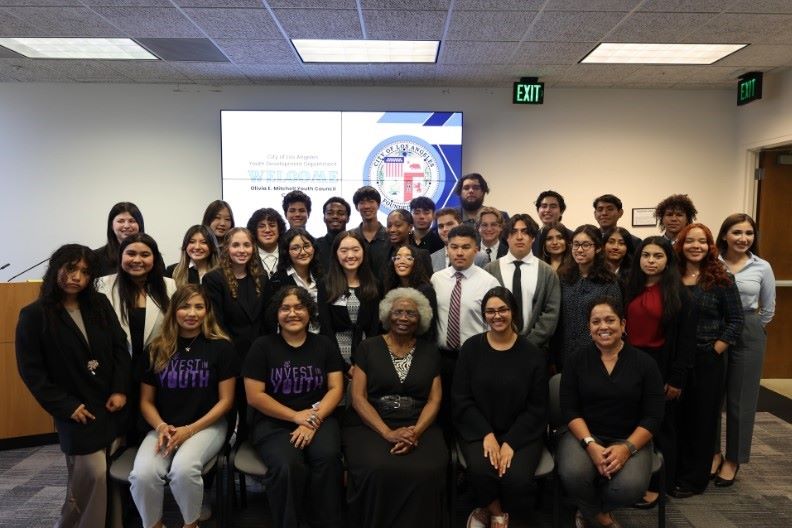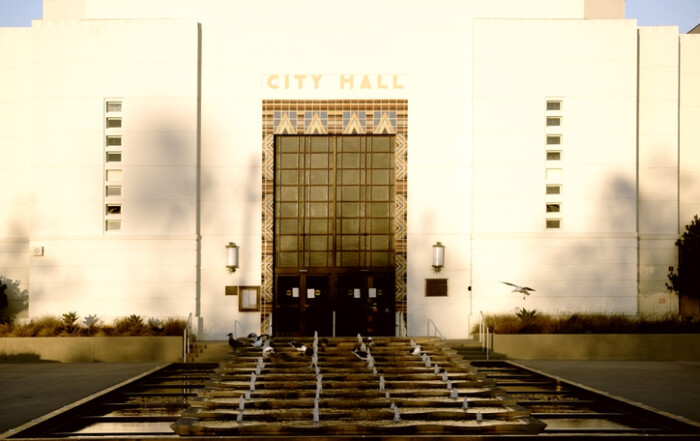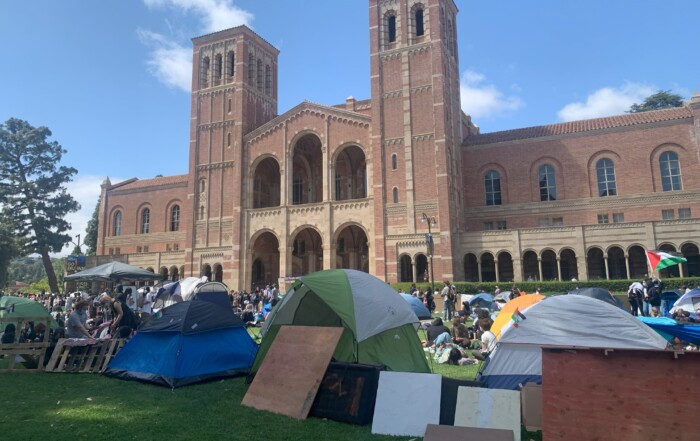The Los Angeles City Council officially approved the Citywide Youth Development Strategic Plan, also known as the Citywide Plan, at its meeting on Wednesday. The plan is a three-year outline of the city’s approach toward the development of its youth programs and services throughout Los Angeles.
Efforts for a more concerted approach towards youth programs started in 2021 with the creation of a Youth Development Department led by Lisa Salazar — who served as the Policy Director for Los Angeles Mayor Eric Garcetti — whose initial directive was the creation of this plan. The department will also set the standards for youth development programs, collect data from these programs, and develop partnerships to fill gaps in programming when needed, among other tasks.
As part of this process, the city also created the Olivia E Mitchell L.A. City Youth Council, a body comprised of 30 youths in the city that helps oversee the Youth Development Department (YDD) and provided input on the creation of the Citywide Plan.
To create a youth-focused plan, the age range that defines what a youth meant in the context of the program needed to be established. Community input and scientific research led the YDD to define youths as anyone 25 years old or younger, noting that psychologists have established that 25 is the age at which brain development finally concludes.
Additionally, the COVID-19 pandemic increased the rate of 16 to 24-year-olds in the city disengaging with school or the workforce. Fourteen percent of all 16 to 24 year olds in Los Angeles are now disconnected.
“These factors motivated the federal government to provide services to transition age youth through age 25,” the report reads, “And influenced the YDD’s definition of youth as well.”
While there are programs and services provided through 26 different city departments that focus on the youth of the city, these programs are somewhat isolated from each other.
“Many youth programs and services continue to be designed and implemented in silos, without a shared vision, overarching priorities, uniform standards, official forums for ongoing collaboration, or targeted strategies to address,” the report reads.
As a result of this disjointed approach, it has proven difficult for both staff and youths to navigate through the various systems to find programs that they need. Under the new framework provided by the Citywide Plan, youth programs will look to achieve the following goals:
- Give the means to become more economically independent
- Provide access to culturally appropriate mental health services
- Develop an understanding of the political process and their own decision-making power
- Facilitate access to safe spaces across the city
- Improve access to safe, affordable housing and community
- Teach youths and their guardians how to navigate the network of services the city provides
For each of these goals, metrics to measure the overall success of the programs have been established, ranging from the increase in the number of family housing and transitional youth housing sites in the city, higher enrollment in city youth programs, and the presence of green spaces for youth in neighborhoods that do not currently have them.
While specific programs are not outlined by the plan, it does have the city adopt the Positive Youth Development Framework set by the United States Agency for International Development as the standard for creating these programs. This framework focuses on providing four key resources that align with the goals of the Citywide Plan, which are:
- Giving youth the necessary resources, skills, and knowledge to reach desired outcomes
- Ensuring youth perceive and can employ their skills to make or influence their own decisions about their lives and set their own goals, as well as to act upon those decisions
- Engaging youth as a source of change for their own and their community’s positive development
- Surrounding youth with an environment that develops and supports them and strengthens their ability to avoid risks and to stay safe, secure, and be protected and live without fear of violence or retribution
Potential sources for funding were also identified to help fund these future programs, including accessing grant funds for art programs through Proposition 28 passed in 2022, applying for Measure J funds from the county, and earmarking funds from future sources like the 2028 Olympics for youth development.
Several speakers on behalf of Youth Coalitions around the city implored the city council to move forward with the measure, arguing there is a need for programs for youth around mental health because youth development has not been a priority in the past.
“We want these young people to have a bright future,” said a speaker from the Invest in Youth Coalition who identified himself as Elias. “So it would be amazing if we could get support from the city to fund programs for these young people.”
Photo of the Olivia E. Mitchell L.A. City Youth Council, courtesy of the City of L.A.
Stay informed. Sign up for The Westside Voice Newsletter
By clicking submit, you agree to share your email address with Westside Voice. We do not sell or share your information with anyone.








